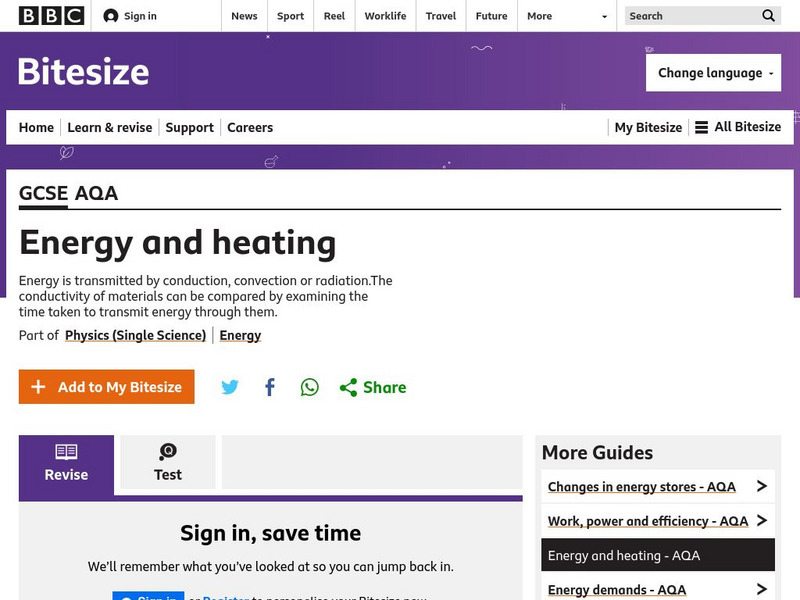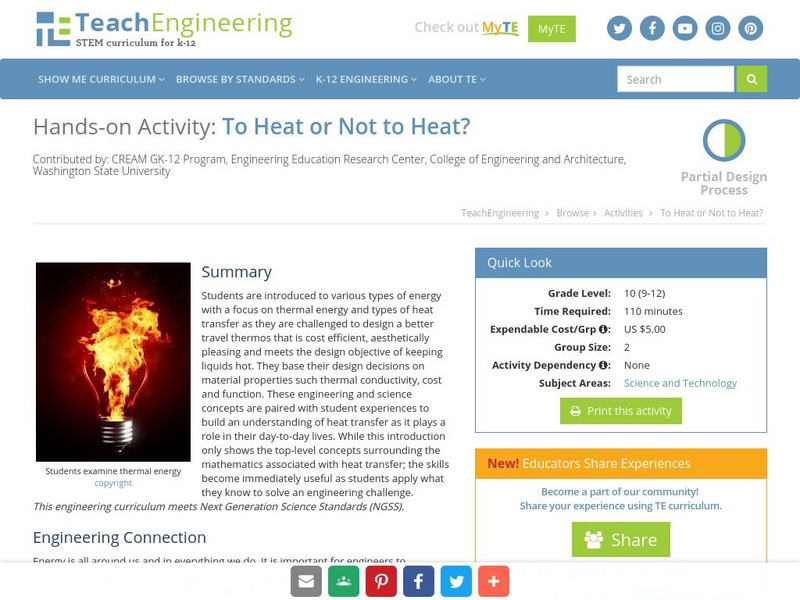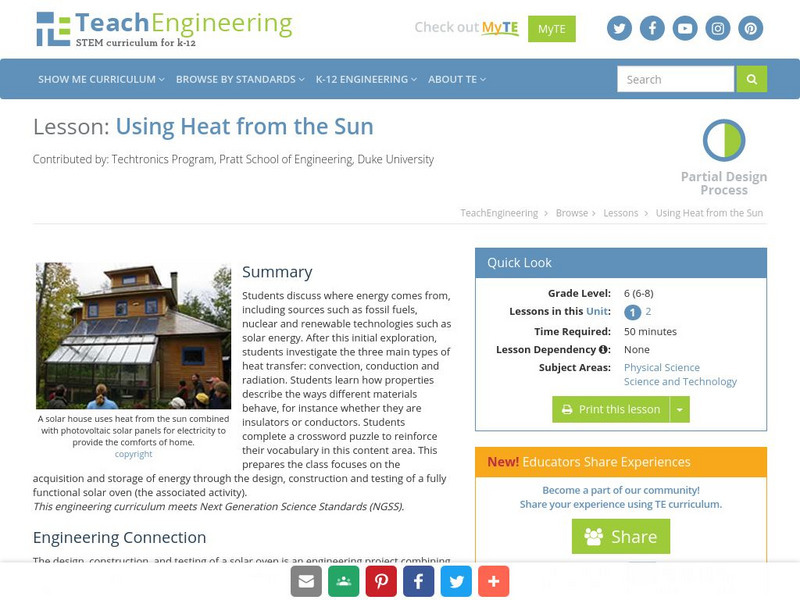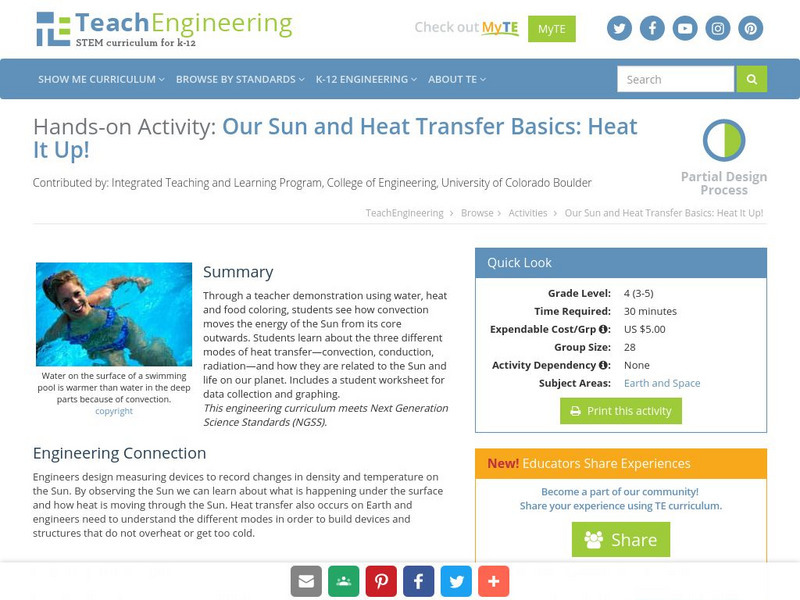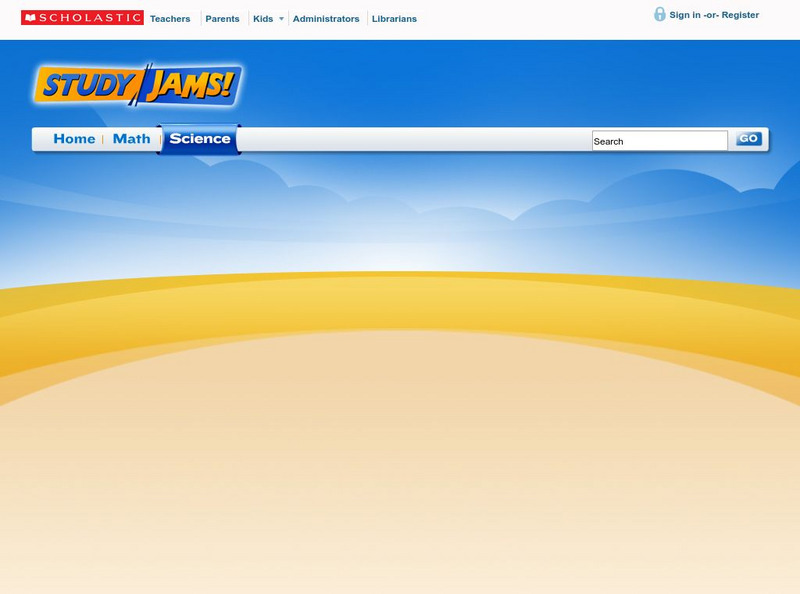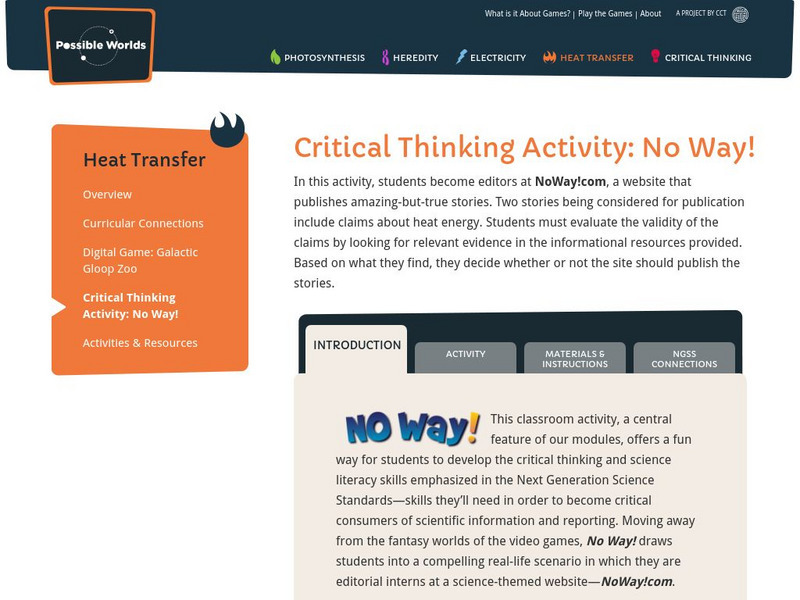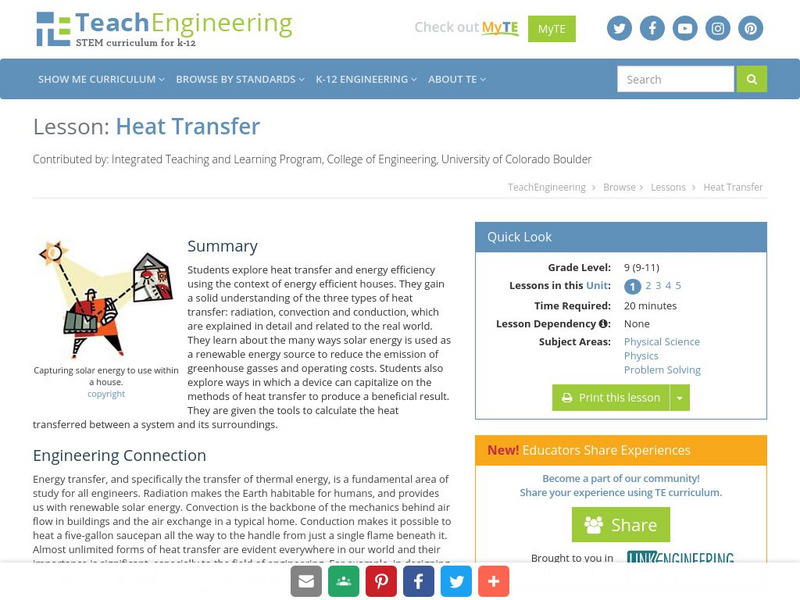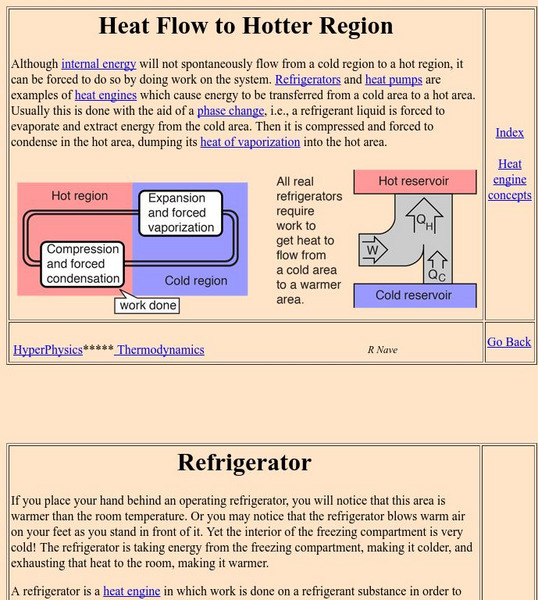Hi, what do you want to do?
American Chemical Society
Middle School Chemistry: Heat, Temperature, and Conduction
Explore heat, temperature, and the conduction of thermal energy through different materials.
American Chemical Society
Middle School Chemistry: Heat, Temperature, and Conduction
Students observe, describe, and draw a model on the molecular level, showing how energy is transferred from one substance to another through conduction.
PBS
Pbs Learning Media: Heat Transfer
Learn about thermal energy, also known as heat or heat energy, and the ways in which it can move from one object to another,
FT Exploring
Ft Exploring: Energy, Heat Flow, and Life
Here you can learn all about heat flow, one of the major driving forces of nature, and how it works. It is the force behind weather, photosynthesis, animal behavior, and much more.
BBC
Bbc: Gcse Bitesize: Energy and Heating
Energy is transmitted by conduction, convection or radiation.The conductivity of materials can be compared by examining the time taken to transmit energy through them. This lesson explains how conduction works and provides a link to a test.
TeachEngineering
Teach Engineering: To Heat or Not to Heat?
Students are introduced to various types of energy with a focus on thermal energy and types of heat transfer as they are challenged to design a better travel thermos that is cost efficient, aesthetically pleasing and meets the design...
TeachEngineering
Teach Engineering: Using Heat From the Sun
In this lesson, students will first discuss where energy comes from, including sources such as fossil fuels, nuclear, and such renewable technologies as solar. After this initial exploration, students will investigate the three main...
TeachEngineering
Teach Engineering: What Is Heat?
Learners learn about the definition of heat as a form of energy and how it exists in everyday life. They also learn about the three types of heat transfer as well as the connection between heat and insulation.
TeachEngineering
Teach Engineering: Heat It Up!
Through a teacher demonstration using water, heat and food coloring, students see how convection moves the energy of the Sun from its core outwards. Students learn about the three different modes of heat transfer (convection, conduction,...
Scholastic
Scholastic: Study Jams! Science: Energy, Light and Sound: Heat
A video and a short quiz on heat, covering its difference from temperature, thermal energy, and the means by which heat is transferred.
Science Struck
Science Struck: Conduction, Convection, and Radiation
Explains the concept of heat transfer and describes conduction, convection, and radiation which are the three modes of heat transfer. Includes formulas, examples, and applications.
Education Development Center
Center for Children and Technology: No Way: Heat Transfer
In this heat transfer activity, learners become editors for a website that publishes amazing-but-true stories. Two stories being considered for publication include claims about heat energy. Students must evaluate the validity of the...
PBS
Pbs Learning Media: Heat Transfer
In this interactive activity adapted from the Wisconsin Online Resource Center, students will learn how heat can be transferred in one of three ways: conduction, convection, and radiation.
European Space Agency
European Space Agency: Impress: Heat Transfer
Learn about the transfer of thermal energy through concise information, and illustrated animations. Contains descriptions of conduction, convection, and radiation.
CK-12 Foundation
Ck 12: Heat Transfer
Students explore the relationship between heat and energy transfer, and then describe how energy is transported through the processes of conduction, convection, and radiation. [Free Registration/Login may be required to access all...
Texas Education Agency
Texas Gateway: Law of Conservation of Energy: Heat Transfer
Given illustrations, scenarios, descriptions, and/or diagrams, students will demonstrate understanding of heat transfer.
OpenStax
Open Stax: Heat Transfer Methods
In this section of the textbook, learn about the methods of heat transfer: conduction, convection, and radiation. Book can be downloaded.
TeachEngineering
Teach Engineering: Heat Transfer
Students explore heat transfer and energy efficiency using the context of energy efficient houses. They gain a solid understanding of the three types of heat transfer: radiation, convection and conduction, which are explained in detail...
Georgia State University
Georgia State University: Hyper Physics: Heat Flow to Hotter Region
Heat flow from a hot region to a cold region is described and explained. Applications of this phenomenon (specifically heat pumps and refrigerators) are discussed. Excellent graphics.
University Corporation for Atmospheric Research
Ucar: Atmospheric Processes Conduction
This simple demonstration helps students understand the concept of conduction. Site includes background information, images, and lesson plans outlining the demonstration of conduction.
Georgia State University
Georgia State University: Hyper Physics: Heat Pump
Heat flow from a hot region to a cold region is described and explained. Applications of this phenomenon (specifically heat pumps and refrigerators) are discussed. Excellent graphics.
Other
Characteristics of Energy and Matter
A lengthy page from the Fundamentals of Physical Geography site. Energy is distinguished from matter, and the different forms of energy are identified and discussed. Four types of heat transfer (convection, advection, conduction,...
TeachEngineering
Teach Engineering: Heat Transfer: No Magic About It
Heat transfer is an important concept that is a part of everyday life yet often misunderstood by students. In this lesson, students learn the scientific concepts of temperature, heat, and the transfer of heat through conduction,...
TeachEngineering
Teach Engineering: Energy
Through nine lessons, students are introduced to a range of energy types--electrical, light, sound and thermal-as well as the renewable energy sources of wind, hydro (water) and solar power. Subjects range from understanding that the...







